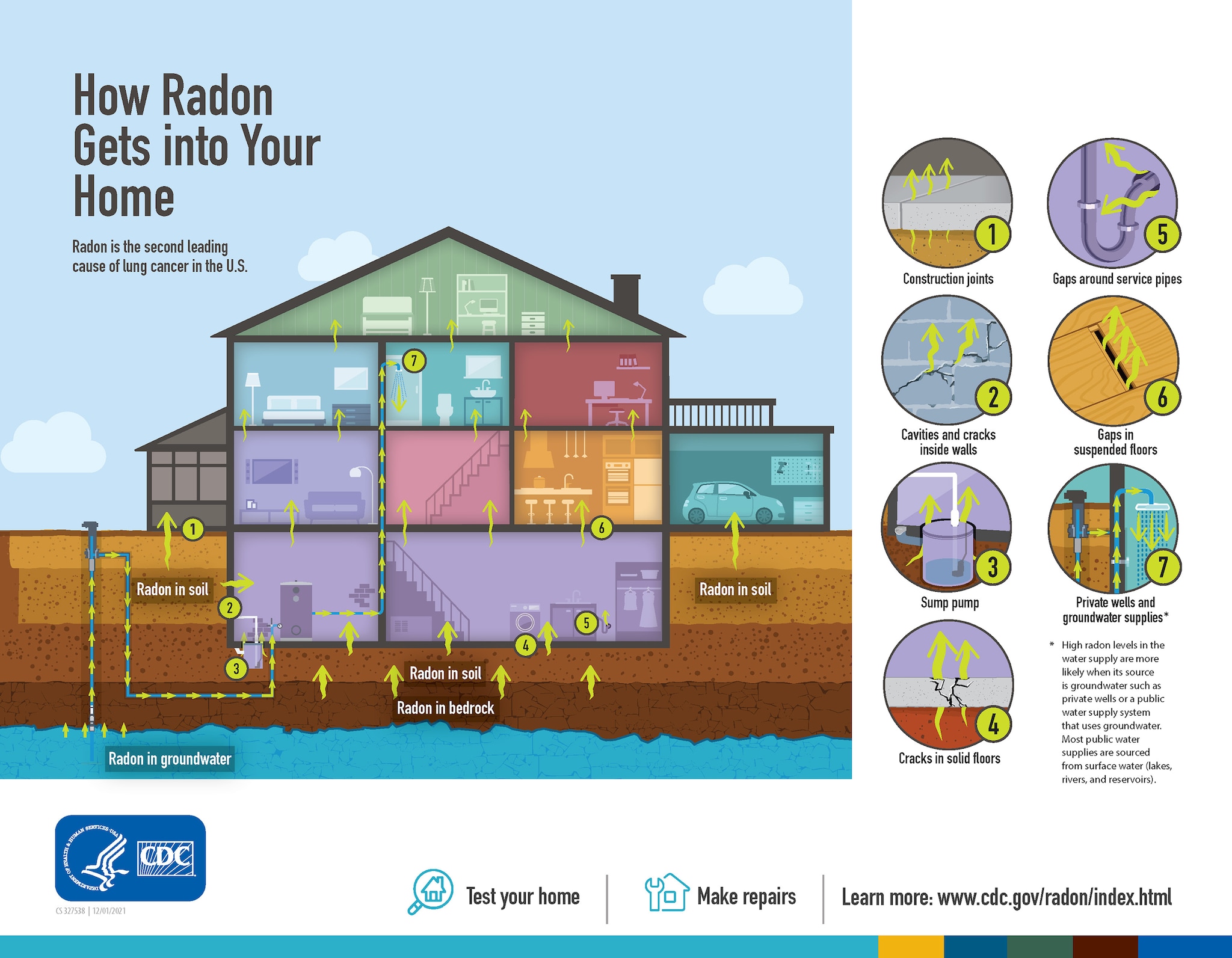Key points
- Radon is an odorless and invisible radioactive gas that can lead to lung cancer.
- Radon can enter your home through construction joints, cavities and cracks inside walls, and sump pumps.
- High radon levels in the water supply are more likely when its source is groundwater.

Overview

Radon is the 2nd leading cause of lung cancer in the United States. It is found in bedrock, soil and groundwater. Radon can seep into the home through
- Construction joints
- Cavities and cracks inside walls
- The sump hole or opening
- Cracks in floors
- Gaps around service pipes
- Gaps in suspended floors
- Private wells and groundwater supplies*
*High radon levels in the water supply are more likely when its source is ground water, e.g. a private well or a public water supply system that uses ground water. Most public water supplies are sourced from surface water (lakes, rivers, and reservoirs).
Test your home. Make repairs. Learn more.
